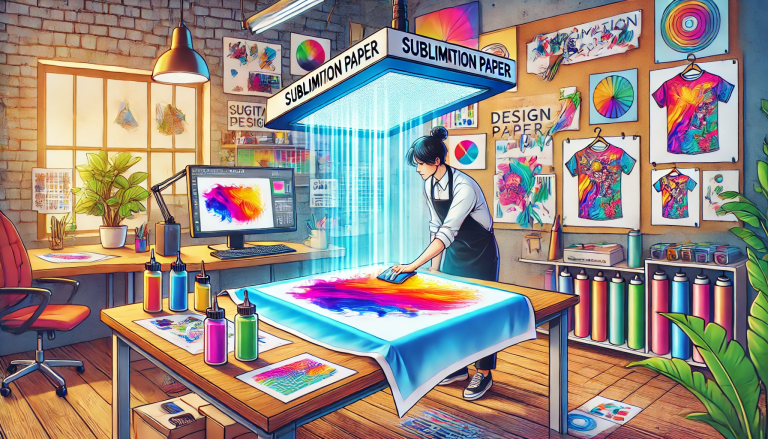“Bring Your Designs to Life with Dye Inkjet Sublimation Paper!” – SUBLIMATIONTRANSFERPAPER – Sublimation Heat Paper Jumbo Roll Manufacturer, Quick Dry Sublimation Paper Factory, Made in China
Dye-sublimation printing has emerged as a popular method for producing high-quality, vibrant, and long-lasting prints on a variety of materials, from textiles to ceramics and even mugs. The process relies on dye-sublimation paper, a specialized type of paper that works in conjunction with heat and specialized inks to transfer vivid colors onto the final substrate. If you’re new to dye-sublimation printing or looking to improve your results, understanding the intricacies of working with dye inkjet sublimation paper is essential.
What is Dye Inkjet Sublimation Paper?
Dye inkjet sublimation paper is designed specifically for use with dye-sublimation printers and inks. Unlike traditional inkjet papers, this paper is engineered to handle the unique properties of sublimation dyes. The primary function of the paper is to absorb the sublimation ink and then release it onto the substrate during the heating process.
Key Characteristics of Dye Inkjet Sublimation Paper
- Absorbency: The paper must be highly absorbent to ensure that the sublimation ink is evenly distributed during printing. Poor absorbency can lead to ink pooling or uneven transfers.
- Release Properties: After the ink is absorbed, the paper must release the dye effectively when exposed to heat. This ensures that the color is transferred cleanly and completely to the substrate.
- Smooth Surface: A smooth surface allows for high-quality prints with fine details and sharp lines. Any roughness can affect the final output.
- Weight and Thickness: The paper weight typically ranges between 60-100 gsm, depending on the application. Thicker paper may be more durable but can also be harder to handle in large-scale printing.
Choosing the Right Dye Inkjet Sublimation Paper
Selecting the appropriate paper for your project is crucial for achieving optimal results. Here are some factors to consider:
- Type of Substrate: Different substrates may require different types of sublimation paper. For example, textiles and polyester materials may require a slightly different paper compared to ceramic or metal substrates.
- Print Quality: If you need high-resolution prints with fine details, choose a paper that is designed for high-quality output. Some papers are specifically engineered for photo-quality prints.
- Printer Compatibility: Ensure that the paper you choose is compatible with your specific dye-sublimation printer model. Some papers may work better with certain printer brands or models.
- Budget: While higher-quality paper often yields better results, it’s important to balance quality with cost. Consider your volume of printing and budget constraints when selecting the paper.
Preparing for Printing on Dye Inkjet Sublimation Paper
Before you start printing, take these steps to ensure smooth and successful sublimation:
- Check Printer Settings: Ensure that your printer is set to the correct paper type and quality settings for sublimation printing.
- Use Genuine Sublimation Inks: Non-genuine or low-quality inks can affect the transfer process and lead to poor results.
- Preheat the Substrate: If you’re printing on a substrate that requires heat (like textiles or ceramics), preheat it to the recommended temperature to ensure proper dye transfer.
- Optimal Print Orientation: Some papers perform better when printed in a specific orientation. Check the manufacturer’s recommendations.
Common Issues and Troubleshooting
Even with the right paper and setup, issues can arise. Here are some common problems and solutions:
- Ink Bleeding or Smudging: This can occur if the paper is not absorbent enough or if the ink is not fully dry before the transfer process. Allow the print to dry completely before heat transfer.
- Poor Color Transfer: Insufficient heat or pressure during the transfer process can result in faded or incomplete colors. Ensure that your heat press is set to the correct temperature and pressure.
- Paper Creasing: Thick or poorly-cut paper can crease during handling. Ensure that the paper is stored flat and handled carefully.
Conclusion
Printing on dye inkjet sublimation paper is a specialized process that requires attention to detail and the right materials. By choosing the appropriate paper, preparing your materials correctly, and addressing common issues, you can achieve stunning, long-lasting prints that meet your expectations. Whether you’re creating custom apparel,decorative items, or promotional products, understanding the role of dye inkjet sublimation paper will help you elevate your prints to a professional level.



